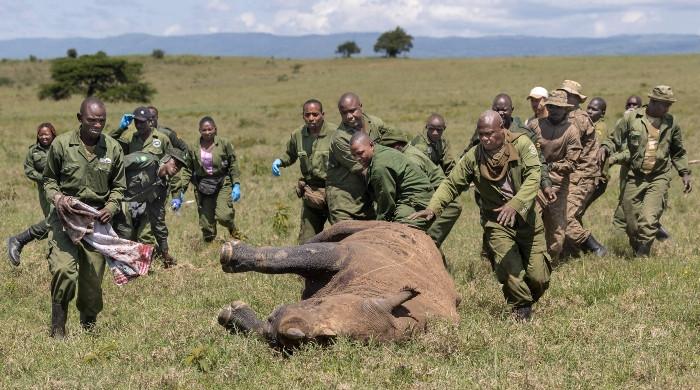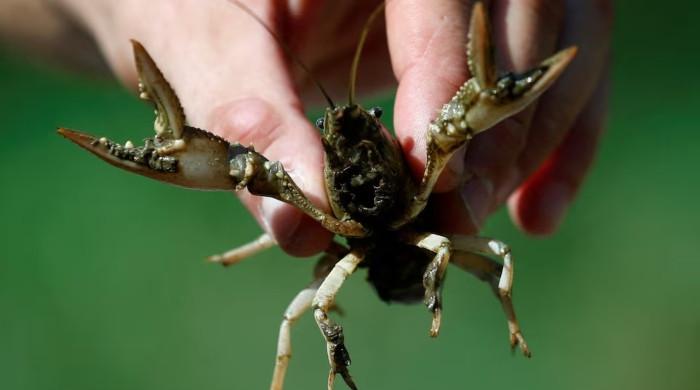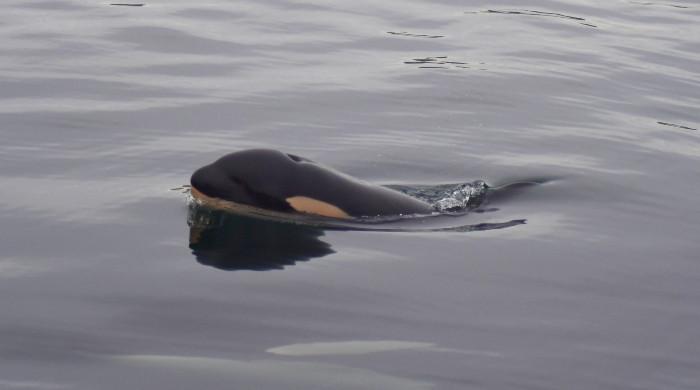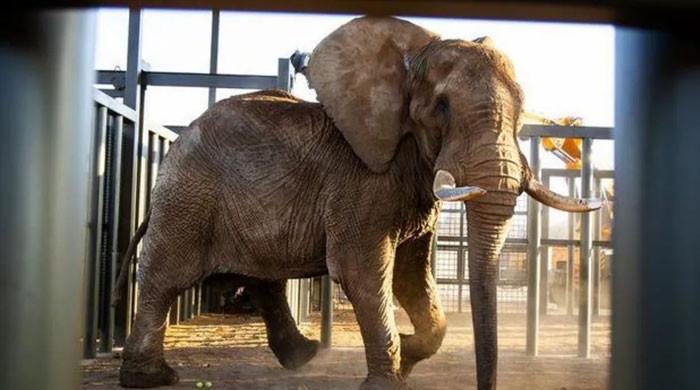KARACHI: WWF-Pakistan, in collaboration with the wildlife departments of Sindh, Punjab and Khyber Pakhtunkhwa, successfully concluded the fourth Indus river dolphin survey on Tuesday.
The survey was started on March 21 from Chashma Barrage and concluded at Sukkur Barrage, covering the entire Indus river dolphin distribution range.
Rab Nawaz, Senior Director Programmes, WWF-Pakistan said that the overall aim of the survey is to provide information for improved conservation actions and adaptive management in order to protect and conserve this endangered species.
He further said that the population of Indus river dolphins is assessed every five years. The first comprehensive study conducted by WWF-Pakistan in 2001 revealed that about 1,100 dolphins exist in the Indus River. The survey in 2006 revealed a total abundance of 1,750 dolphins in the Indus River. While, the population of the Indus river dolphin was about 1,452, according to a survey conducted in 2011.
Commenting on the current survey, he said that the current population trend looks positive and official results will reflect efforts made by WWF-Pakistan with support of wildlife departments to conserve a viable population of the Indus river dolphin by reducing fatalities due to canal stranding through rescue operations, capacity building sessions with officials of concerned departments and community awareness.
While, Saeed Akhtar Baloch, Conservator Sindh Wildlife Department said that the department was taking all possible efforts for the conservation of the dolphin population. He was of the view that water pollution, unsustainable fishing and reduced freshwater flow are the major threats, which are being addressed to conserve this endangered species.
‘The Indus dolphin is a marvel of evolutionary adaptation and the department is taking all relevant organizations on board for conservation and protection of the mammal,’ he added.
The habitat of this species is reduced to one-fifth of its historical range and the remaining habitat has become degraded, primarily due to shortage of water caused by the river’s diversion to meet growing agricultural needs in a semi-arid country. Canal stranding, contamination due to industrial waste and agrochemicals, unsustainable fishing and net entanglements also contribute to endangerment of the species.
The Indus river dolphin (Platanistagangetica minor) is a freshwater cetacean and a global priority species. It is endemic to the Indus River System in Pakistan and is listed as endangered in the International Union for the Conservation of Nature (IUCN) Red List of threatened species.
The 20-member survey team led by Hamera Aisha, Manager Wildlife, WWF-Pakistan, comprised of members from the provincial wildlife departments, irrigation departments and zoological survey department.
Dr. Gillian T. Braulik, member International Union for the Conservation of Nature (IUCN) Cetacean Specialist Group, and a dolphin conservation expert provided the survey team with initial technical assistance based on her expertise of previously leading dolphin surveys.
-
Virgin birth in crocodile reported in Costa Rica zoo
-
Big cats of Instagram: Pakistani elite's love of exotic wildlife
-
Australian couple raising 17 kangaroos
-
Big cats in evolutionary arms race with prey: study
-
ACF Creates Donkey-Friendly Harnesses
-
Lizard, turtle among more than 100 new species found in Mekong region
-
Baby panda makes press debut at Japan zoo
-
Panda enjoys snowfall











